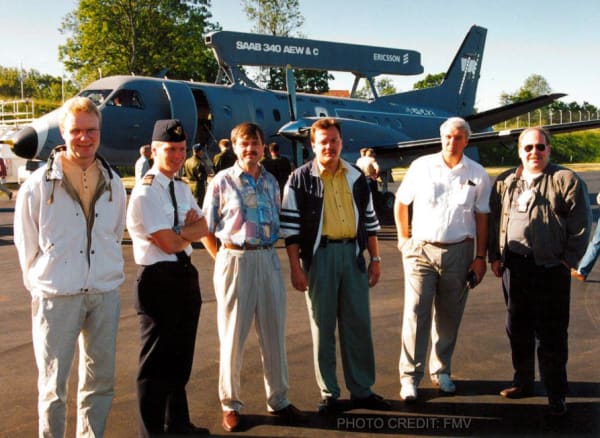The First Airborne Radar in Sweden Underwent Final Testing 20 Years Ago
The history of airborne radar in Sweden stretches back to the 1970s, when a solution comprising a surveillance pod mounted to a fighter aircraft was first discussed. This solution was rejected, however, and something that marked a turning point in the development of today's ASC was a parliamentary motion proposed by Margaretha af Ugglas (M) in 1982.

The motion declared that the best option "would be to fashion a single turboprop transport aircraft equipped with dorsal spine antennas into a radar carrier". The motion proposed that parliament should advocate a solution of this sort to government.
"In 1985 we received an order from the Swedish Armed Forces to begin development of an airborne radar with the name PS-890," says Erik Winberg, Business Development in Airborne Surveillance Systems, Surveillance. "This order proved to be remarkably prescient, and was the world's first active electronic antenna in this application."
"The maiden flight with a function model for the radar system was carried out in 1991," says Sven Larsson, Product Director Airborne ISR at Support & Services, who worked with the new radar system at that time while employed at FMV. "But there was no on-board signal processing then."
Flight testing continued throughout 1992, although now with on-board signal processing and, in the same year, the first serial orders for the FSR Airborne Surveillance Radar System were received from the Swedish Armed Forces. In total, six systems were ordered.
"In 1994, the function model flew its last campaign, and this was the first time the operator display was in place," explains Sven. "This was followed, in 1996, by the final testing of the system in series production, and the complete system was handed over to the Swedish Air Force the next year."
During this period, FMV served as supplier to the Swedish Armed Forces. The aircraft came from Saab, the radar system was supplied by the incarnation of Ericsson existing at that time, and FMV was responsible for assembling everything into a single unit.
FMV supplied four such airborne surveillance radar systems (FSR 890) to the F16 wing of the Swedish Air Force. Surveillance radar aircraft are included in the Swedish Air Force under the name Argus, after Argus Panoptes, the 100-eyed giant from Greek mythology.
"The designation FSR 890 was eventually changed to ASC890, as the system was upgraded to an on-board command centre, and the aircraft still has this designation today," says Erik. "The radar surveillance system has undergone constant development and updating, and is state-of-the-art."
The airborne radar surveillance system that goes under the name ASC890 in Sweden, is known internationally as Erieye and is also carried nowadays by aircraft other than Saab 340. The newest iteration is called GlobalEye and consists of an Erieye ER (Extended Range) radar, which is carried by the Bombardier 6000 aircraft. A version of this newest system has been sold as two complete systems to the United Arab Emirates.